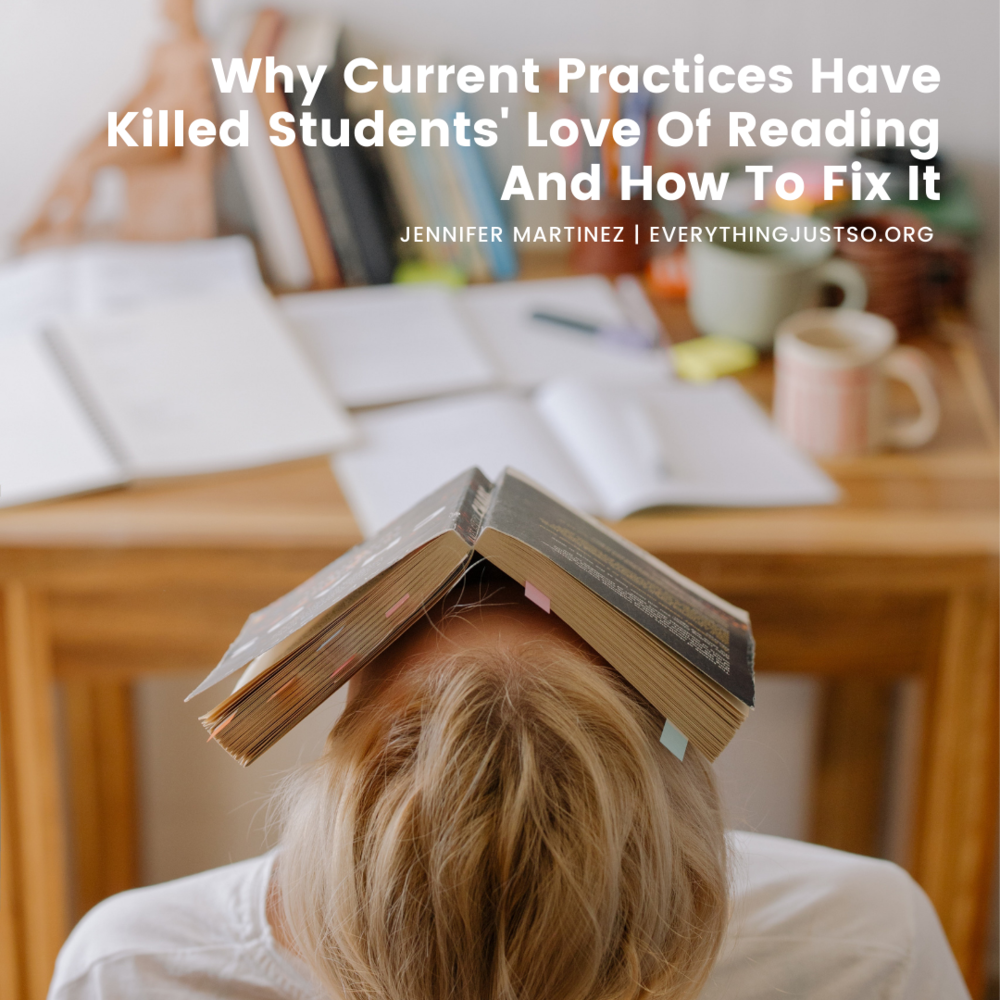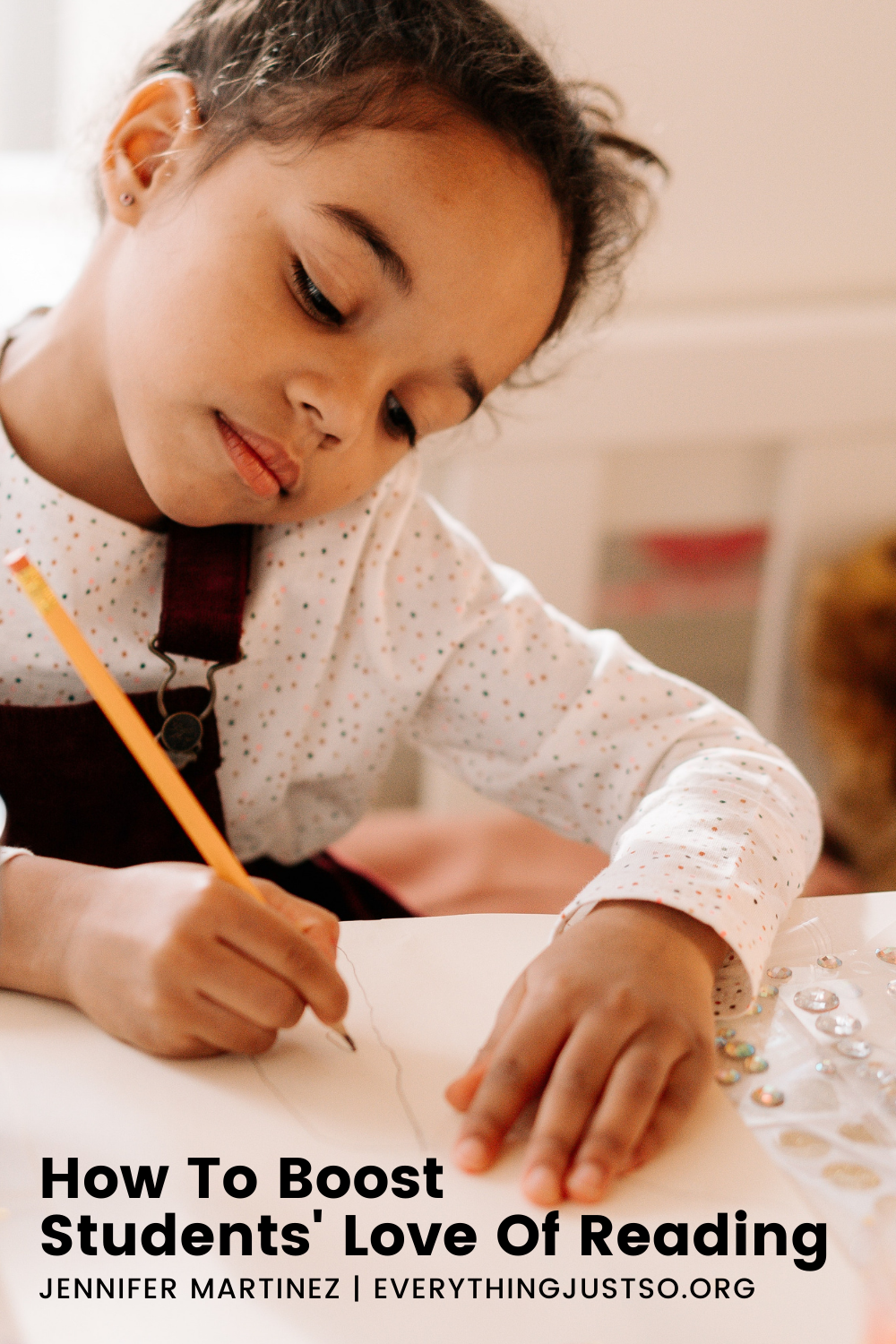Why Current Practices have Killed Students’ Love for Reading - and What to Do About It
What’s wrong with the way we’ve been doing it?
Current classroom practices are killing students’ love of reading.
Does that sound dramatic?
Probably. But that doesn’t make it any less true.
Look at how we’ve been approaching reading in our classrooms.
Only allowing students to read books “at their level.”
Requiring students to answer comprehension questions and complete worksheets after every book.
Not providing sufficient time for students to read independently.
Have you ever told a student he couldn’t choose a particular book to read because it wasn’t the right level for him and seen the light go out of his eyes? I have.
Have you ever seen a student close a book in the middle of a sentence because the timer went off and she had no interest in reading past the required amount of time? I have.
Have you seen students fudge their reading homework because they weren’t interested in the book they were reading and, in their words, “Just didn’t like to read?” I have.
These are only some of the reasons I decided to take a long, hard look at how I was teaching reading and assigning reading homework in my classroom.
I knew I needed to make changes. My students’ abilities to become motivated, independent readers depended on it.

But what about standards?
I know. You have standards to teach and grade-level requirements to meet. And sometimes, traditional reading assignments seem like the best way to meet those goals.
But… neither standards nor grade-level requirements matter much if your students don’t read.
Reading is too important not to pay attention to what is happening to our students. Students need to read and read well, not just to understand concepts and retain information, but to experience the world they live in. To build empathy skills. To discover people and cultures outside of their own experience. To be good citizens of the world.
It’s time to do something to help our students rediscover – or discover for the first time – their love for reading.
How?
It starts with choice.
Why is providing student choice so important?
Allowing students to choose means they take ownership of their learning. Research shows that when students are allowed to choose what they read, they read more, understand more, and are motivated to continue reading.
Self-selected reading has been shown to be more powerful than teacher-selected in developing comprehension skills and motivation to read.
When students are allowed to take ownership and make choices, they are more motivated to read. Not just read for a required amount of time (until a timer goes off) and not just respond to a set list of questions. But to read for pleasure, think more deeply about their reading, and grow as readers. After all, isn’t that the point of reading homework? For our students to grow into stronger, more independent, more enthusiastic readers.
How can you encourage your students to read for pleasure?
Some students will arrive in your classroom with a love for reading. They’re the ones you might catch trying to read a book under their desks while you’re teaching math or social studies. They’re the ones who are first in line when it’s time to visit the media center. I was that student.
Those students are becoming rarer. Some blame video games, social media, and too many extracurricular activities. And yes, there is some validity to those arguments. I still believe – strongly – that any student can learn to love to read and it’s our job as educators to help them discover that love.
Simply providing students with choices about what they read isn’t going to turn them into independent, motivated readers. Your students who came to you as avid readers? Somewhere along the way, they were taught how to choose books that interested them.
It may have been a parent taking them to the library and perusing the shelves with them. It may have been a teacher in their earlier elementary years who spent the time helping her students choose books that sparked their imaginations or touched their hearts.
Your reluctant readers and even your ambivalent readers need you to teach them how to find the books that are right for them. Let’s talk about ways you can accomplish this in your classroom.
Some suggestions to encourage your students to read for pleasure:
Host a book tasting – provide “samples” of a wide variety of books for students to try.
Host book talks – encourage students to recommend books they enjoyed to their classmates.
Encourage students to form book clubs – provide time and space for them to hold their clubs, but encourage students to take the lead!
The most important thing you can do is TALK. Talk about the books you loved when you were there age. Talk about books you love now. Talk to your students about the books they’re reading. Encourage your students to talk to each other about what they’re reading. Do all you can to create genuine interest and excitement in your classroom around books and reading.
How I provided choice for my students?
My desire to provide my students with choices in their reading led to the creation of a resource. I developed a new kind of reading log.
It was not the reading logs my students and parents were used to.
What was missing? Timers and signature lines.
What was new? Choices!
I provided students with options in how they responded and included different choices – questions appropriate for fiction and nonfiction texts.
Students appreciated having the choice of how to respond each night. It felt less like a chore.
Did the new reading logs make a difference?
The year I implemented the new reading log, I saw drastic results. This new reading log did more than just give students choices. It allowed me to see if they were able to select appropriate responses and answer them fully while practicing necessary skills.
You can find reading logs for 3rd, 4th, and 5th grades in my TPT store here. Head there to preview the logs and hear from teachers like this one who have put this system into practice.
"LOVE this resource. I used it all year, and it was nice to align it to whatever we were covering in class. Students also liked that they had the option to create their own entry."
Interested in more support for reading instruction? I have a ton of reading, spelling, and writing resources. Check out my collection of blog posts and resources here.

